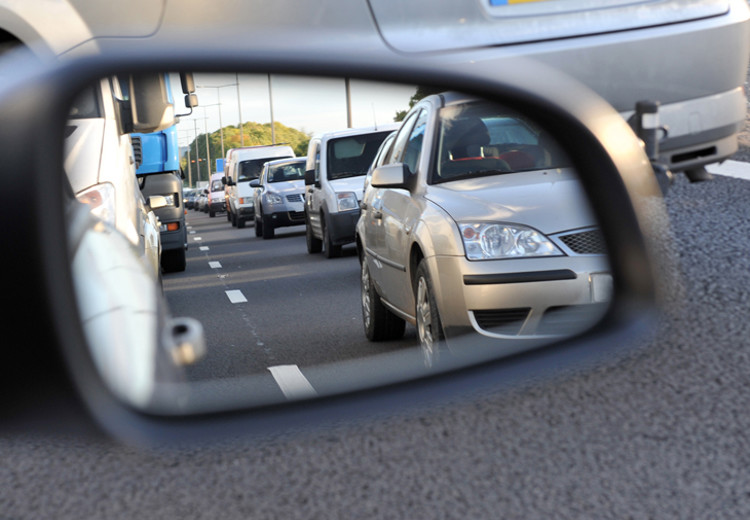Passenger cars
Severe hybrid engine oil testing
20 May 2025
18 January 2022
As the automotive industry works hard to decarbonise, will the Euro 7/VII emission standards be an unnecessary distraction?

To meet tightening CO2 emissions regulations in 2030 and beyond, the automotive industry is focusing much of its efforts on transitioning away from the use of fossil fuels. However, the European Union is also proposing more stringent air pollutant emissions standards for both light and heavy-duty combustion engine vehicles. Insight talks to Dr Paul Greening, ACEA Green Team Lead Director, about the need for the proposed emissions regulations, their potential to side track industry technology developments and assesses his views on the best route forward.
 Dr Paul Greening, ACEA Green Team Lead Director
Dr Paul Greening, ACEA Green Team Lead DirectorAccording to ACEA’s Paul Greening, looking back at the Euro 6 implementation for some potential learnings does not look likely to be a fruitful exercise in the development of Euro 7/VII. While the European Commission only proposed Euro 5, Euro 6 was a political addition by the Council and European Parliament as a basis for fiscal incentives. Paul suggests that its introduction forced the Commission to do a lot of work in a short space of time to deliver the technical testing procedures required. “Unfortunately, that pressure led to a Euro 5/6 regulation that was inadequate, unclear and incomplete and since then, there have been nearly 58 changes to Euro 5/6 impacting all types of passenger cars and vans, resulting in a non-stop development and type-approval challenge for all manufacturers. That also includes the major change and challenge in 2017 when Euro 6 moved to Real Driving Emissions (RDE), where pollutant emissions are measured during variable on-road driving using market fuel, not just under controlled laboratory conditions.” While Euro V/VI saw fewer changes Paul says it has still been a significant challenge for heavy-duty vehicle (HDV) manufacturers.
“These changes have had a high impact on our members and my request to the Commission for Euro 7/VII would be to do it properly, do it completely and give industry a stable regulatory framework for Euro 7 and Euro VII with a proper lead-time.”
At the same time, Paul is mindful that the automotive industry is going through a period of unprecedented change as it works to meet the CO2 emissions legislation that will be implemented in 2030 and beyond. “Our industry is going through the massive transition of de-fossilisation as a result of the upcoming CO2 legislation. It actually threatens the viable future of the internal combustion engine (ICE), and we can expect sales of these conventionally powered vehicles to fall, which puts the need for Euro 7 and Euro VII and the investment return periods into perspective.”
While Paul says that ACEA is not against Euro 7/VII, he does feel that the regulations should be based on facts and science and be proportional and cost-beneficial. But, despite their potential cost and complexity, he can see the opportunity for a pretty quick turnaround in their development and implementation. “We see the possibility for an ambitious Euro 7/VII with meaningful emission limit reductions and a fast timing to put Euro 7/VII to bed (in terms of planning and development). This would help to avoid assigning massive engineering resources and investment to this development that would be better used on de-fossilisation. But, in return, that means we need a fast and sensible regulatory process finished in 2022 or early 2023, the continuation of the effective test procedures of the latest Euro 6/VI steps and proper lead-time without interruption. Strictly on the basis of such a package, we would see no reason why both Euro 7/VII could then not start by the end of 2025.” “But,” he continues, “if Euro 7/VII is more complex than it needs to be, then more time will be needed and this will start to encroach on OEMs’ de-fossilisation plans and could completely change the way they approach Euro 7/VII for ICE vehicles compared to an earlier timetable.”
The specific stated objectives of Euro 7/VII are to improve air quality, with a particular emphasis on urban areas, by reducing air pollutant emissions from road transport and setting harmonised rules for vehicles. However, as Paul explains the Commission has not published any impact assessment on Euro 7/VII scenarios and has shown no indication that it will consider the impact that Euro 7/VII will have on the key ambient air quality pollutants: NO2, particulate matter (PM) and ozone. “What we have done is ask air quality consultants, AERIS Europe, to look at the impact that the roll-out of Euro 6/VI vehicles is having on air quality and air quality compliance rates and to explore the impact that a range of potential Euro 7/VII standards might have in the future."
"Studies suggest the step that could have the fastest impact on human health would be to forget about Euro 7/VII and instead implement a widespread coordinated fleet replacement programme.”
The results of the AERIS research make compelling reading and Paul goes on to give more insight into their findings. “We learnt that even the most severe Euro 7/VII scenarios will contribute only a marginal benefit to NOx above what fleet renewal to the latest Euro 6/VI vehicles and a conservative transition towards electrification by 2030 would achieve. A focused approach to fleet renewal directed at the HDV sector would deliver a beneficial impact on NOx emissions of some 10 times what the severest Euro VII scenario would deliver.”
While the emission limits are the political focus of Euro 7/VII, the technical tests can have as much or an even greater impact on their technical feasibility. Here Paul sees the real driving emissions (RDE) as an area that needs clarification for ACEA members who are working to comply with Euro 7/VII scenarios. “The focus on Euro 7/VII will be pollutant emission measurement under RDE conditions but that requires a framework to define what are real driving conditions. Today, we believe the boundary conditions of Euro 6d RDE cover some 95% of all driving events. While it is practically impossible to drive an RDE trip that covers those 95%, OEMs must design compliance over a huge range of boundary conditions and combinations of conditions, in case someone might run RDE tests at the extreme boundaries. The last 5% would be a major challenge and that depends on, for example, (a) is driving in that last 5% statistically valid, (b) does driving in that last 5% actually occur in areas where population may be exposed to emissions and (c) does that last 5% offer the opportunity for third parties to drive the car illogically in conditions that would never occur, just to try and beat the RDE test and deliberately try to show a vehicle does not conform. So, we think that the Euro 6d RDE boundary conditions are fair and broad but there are certain areas where we can explore improvements in coverage. What would not be acceptable to us would be to ask for 100% with no RDE boundary conditions, or 'free driving' as the Commission consultants (CLOVE) called it.”
In addition, the introduction of a new particle measurement method will count more of the smaller particles in the exhaust using a 10 nanometre cut-off rather than today’s 23nm cut-off. This will increase the severity of the current PN limit by 30-50% and may impact hardware and lubricants of the future. “Road transport exhaust particle emissions are falling and the best available aftertreatment technology is already employed on all new vehicles. Ash formation in the particle filter is a diesel application issue that could lead to limited lifetime of the filter. We don’t see issues here at the moment but that will also depend on the emission systems durability or useful life requirements being extended, which we do expect to be the case in Euro 7/VII. But, without knowing what Euro 7/VII will be, we can’t conclude on further lubricant ash limitations. If Euro 7/VII has a strong focus on the cold start period, particle filter heating may be required to achieve low particle numbers in any conditions, in particular cold start."
"If ACEA members see a need for some chemical changes to the oil specifications due to exhaust aftertreatment system limitations then ACEA would have to react.”
In ACEA’s view, the need for Euro7/VII should be assessed against what the existing measures will deliver for improved air quality to determine if a new regulation is needed to close any gap, or other measures might be more proportional. “I see some concern that Euro 7/VII could be used as a tool to encourage OEMs to move away from ICE towards electrification. Vehicle electrification is a solution for road transport the current Commission is pushing on all fronts within the ‘Fit for 55 package’ adopted in July this year and now under discussion between the Council and European Parliament. As an industry we must be able to allocate financial and engineering resources to de-fossilisation and CO2 reduction."
"We need to invest, we need to recover that investment to pay for what comes next and we would like to keep the ICE-based industry in the EU."
"It is important to find a sensible approach to Euro 7/VII because although it may well be seen by some as a secondary matter, it could also end up being a complex and costly diversion.”
Sign up to receive monthly updates via email